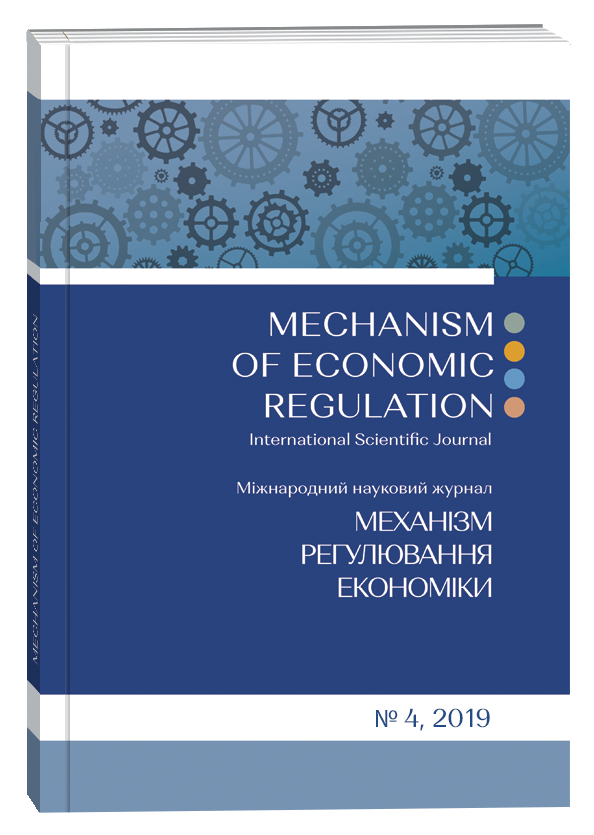ENERGY GAP: BIBLIOMETRIC ANALYSIS
Abstract
The paper deals with analyses of the leading scientific directions to investigate the energy gap. The main goal of the paper is to analyse the tendency in the scientific literature on energy gap to identify the future research directions of the primary determinant, which influenced its volume. In the paper, the author used VOSviewer and Scopus Tools. The article reviewed papers (published 1991-2019) which indexed by Scopus and Web of Science. Using the Scopus analyse tools showed that in 2014 the numbers of paper which focused on energy gap began to increase. The scientists from the USA, China and India, had the most significant share of the documents on the energy gap. At the same time, the National Natural Science Foundation of China and the U.S. Department of Energy sponsored most of the papers on energy gap. In 2014 the number of documents which focused on analyses of energy gap increased in such journals with high impact factor as follows: Journal of Economic Perspectives, Economic Modelling, Functional Ecology. The findings showed that the theme of energy gap is in the current trends of sustainable development and green energy. The data from VOSviewer identified 8 clusters of the papers which investigated the energy gap from the different points of views. The first significant cluster involved the keywords as follows: energy efficiency, energy-saving, energy efficiency gap etc. The third cluster focused on sustainability and climate change. The second and fourth clusters concentrate on engineering and technological aspect of the energy gap. The third and the first clusters located close to each other. It allowed proving that one of the significant parameters on energy gap were: sustainability; energy efficiency gap; share of the renewable energy. Such tendency allows concluding that the energy gap should be analysed from economic and management point of views. Besides, considering the findings, the main dimensions which influenced the energy gap could be grouped as follows: technological; ecological; energy efficiency; sustainable development.
References
Backlund, S., Thollander, P., Palm, J., & Ottosson, M. (2012). Extending the energy efficiency gap. Energy Policy, 51, 392-396.
Chen, G. Q., Wu, X. D., Guo, J., Meng, J., & Li, C. (2019). Global overview for energy use of the world economy: Household-consumption-based accounting based on the world input-output database (WIOD). Energy Economics, 81, 835-847.
Chirichenko, Y., & Fisunenko, N. (2018). Marketing determinants of the development of the investment market: innovations in the assessment of demand and supply (case study for the construction industry). Marketing and Management of Innovations, 3, 81-94.
Gerarden, T. D., Newell, R. G., & Stavins, R. N. (2017). Assessing the energy-efficiency gap. Journal of Economic Literature, 55(4), 1486-1525.
Hunt, A., & Greenstone, M. (2012). Is There an Energy Efficiency Gap? Journal of Economic Perspectives,26 (1), 3-28.
Ibragimov, Z., Lyeonov, S., & Pimonenko, T. (2019). Green investing for SDGS: EU experience for developing countries. Economic and Social Development: Book of Proceedings, 867-876.
Jaffe, A. B., & Stavins, R. N. (1994). The energy-efficiency gap What does it mean? Energy policy, 22(10), 804-810.
Lyeonov, S., Pimonenko, T., Bilan, Y., Štreimikienė, D., & Mentel, G. (2019). Assessment of Green
Investments’ Impact on Sustainable Development: Linking Gross Domestic Product Per Capita, Greenhouse Gas Emissions and Renewable Energy. Energies, 12(20), 3891.
Nepal, R., al Irsyad, M. I., & Nepal, S. K. (2019). Tourist arrivals, energy consumption and pollutant emissions in a developing economy–implications for sustainable tourism. Tourism Management, 72, 145-154.
Reddy, B. S. (2003). Overcoming the energy efficiency gap in India’s household sector. Energy Policy, 31(11), 1117–1127.doi:10.1016/s0301-4215(02)00220-3
Scott, K., Giesekam, J., Barrett, J., & Owen, A. (2019). Bridging the climate mitigation gap with economy‐wide material productivity. Journal of Industrial Ecology, 23(4), 918-931.
Sotiriou, C., Michopoulos, A., & Zachariadis, T. (2019). On the cost-effectiveness of national economy-wide greenhouse gas emissions abatement measures. Energy policy, 128, 519-529.


